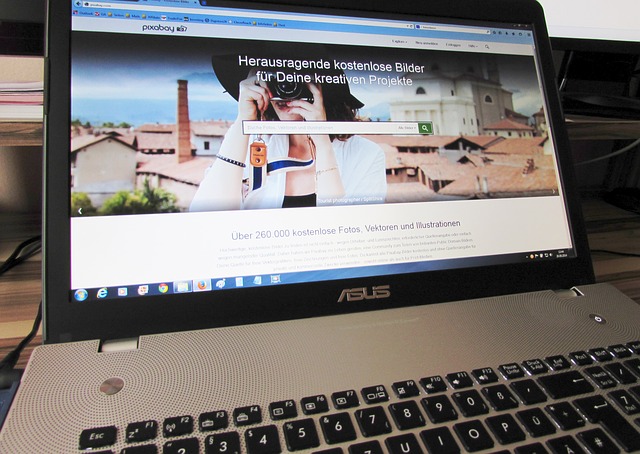A high bounce rate is the kind of issue that keeps PPC marketers up at night.
It can have them tearing their hair out every day, trying to understand why the numbers keep going up and how to keep people on their pages for longer. It can feel like an impossible task sometimes, but there are solutions.
Don’t stand for a quickly dwindling PPC budget and a rising bounce rate. Give these simple solutions a try and watch your spending statistics get back on track.
1. Keep your keywords niche
One of the biggest mistakes aspiring PPC marketers make is to try and cast too wide of a net. You’re never going to capture everyone, so it’s best to target a specific market and build your keywords around it.
PPC keywords should be niche and specific to the landing page. Treat the page you’re looking to get people to land on as your starting point and work back from there.
What are the keywords used throughout the page that you think you could use within your strategy?
People think in keywords, specifically when using search engines, so target the ones that are prominent throughout your landing pages. Your keywords need to be as contextual as possible to ensure users stay interested.
Consider not just what someone landing on your page is searching, but how and why. What questions are they asking the search engine, and how are they phrasing them?
PPC marketers need to be constantly putting themselves in the shoes of their customers, but with a focus on imagining the kind of language they use in their search queries.
This kind of knowledge comes from a thorough research of the terms, analyzing Google’s related search suggests and establishing strong customer personas to guide your initial keywords.
2. Follow up expectations
Treat a high bounce rate like you would instant buyers’ remorse.
How often have you made a purchase, brought it home, excitedly unwrapped it, and realized it isn’t quite as advertised? How did it make you feel? Probably pretty stupid.
The same feeling applies to a user who clicks on an enticing PPC link only to find themselves on a seemingly irrelevant page. The only difference is they won’t be buying a replacement with a store credit, they’ll be gone for good.
Many major companies using PPC are guilty of this marketing sin. Their huge budgets, notoriety, and instantly recognizable websites may help them get away with misleading PPC ads, but for smaller businesses looking to make the most of their budget, it’s a huge money sink.
This is why you have to make sure your landing pages deliver what the copy within the ad is promising.
It’s no good to build copy you think is attractive and enticing to the average browser if the page they’re landing on bears no relation to what they searched.
PPC expert Brad Geddes speaks on this idea during his appearance on the Marketing Speak marketing podcast, explaining how if an ad includes an offer or call to action, they better also be found on the landing page.
Just using Marketing Speak’s website as an example, the homepage is a great sample to follow, clearly telling a user that this is a marketing podcast through well-displayed copy and calls to action of what to do next.
In the case of PPC, honesty is generally the best policy. Trying to trick people into clicking will only harm you in the long run and keep that bounce rate high.
3. Simplify user experience/readability
One of the biggest reasons for a high bounce rate is poor web page useability.
Slow load times are frequently cited as one of the main reasons a user will leave a website, but preparing your landing pages for a PPC campaign requires much more than just a speed check.
Users need to be told exactly what to do when they land on a page. Yes, you may have smart users who understand how your website works, but you’re targeting first-time visitors unfamiliar with your brand now.
Many PPC users will not have visited your website before and how to navigate it may not be obvious to them.
It’s imperative you have clear calls to action throughout that don’t just entice visitors into making a decision, but hold their hand and guide them to the next step of it.
Likewise, you need to make sure all links on the page are obvious and clickable. This is all part of creating a useful road map for the experience.
If the page isn’t easily readable with the written-for-the-web copy (clear headings and plenty of white space) then it will look like a mess and users will bounce.
Jimdo recommends following the inverted pyramid model of frontloading the page with information. Think about the specifics of your industry and how you need to guide the user experience.
If you’re an e-commerce store the journey to your website should be clear and concise, achievable in just a couple of simple clicks.
Extra tips to reduce PPC landing page bounce rate
 If you’re already making use of these tips and seeing no significant change to your bounce rate, here are some other, smaller things you can do to try and keep it low.
If you’re already making use of these tips and seeing no significant change to your bounce rate, here are some other, smaller things you can do to try and keep it low.
1. Put branding first
Make it clear to the customer visiting your website for the first time who you are and what you do.
This involves consistent banners that feature not just a name, but a purpose for your business.
Avoiding a high bounce rate is all about installing a sense of confidence early.
2. Think about your copy
Look at your failing landing pages, is the copy informative, entertaining, and enticing?
How could you go about improving these pages and their content to make your messaging clearer and include clear calls to action?
There is a dearth of excellent content out there to learn from and try and separate yourself from.
3. Avoid pop-ups
A PPC visitor is very different from an organic visitor, they’re less willing to give websites with annoying features a chance.
With this in mind, you need to streamline the user experience, which means avoiding using those annoying ad pop-ups.
PPC is a difficult beast to master, even for the most experienced digital marketers. There are some elements that are out of your control, but these techniques will put a significant dent in your bounce rate number.

Kayleigh Alexandra is a part-time writer at WriterZone and content writer for Micro Startups, your online destination for everything startup. She’s passionate about hard-working solopreneurs and SMEs making waves in the business world. Visit the blog for your latest dose of startup and charity insights from top experts around the globe @getmicrostarted.
